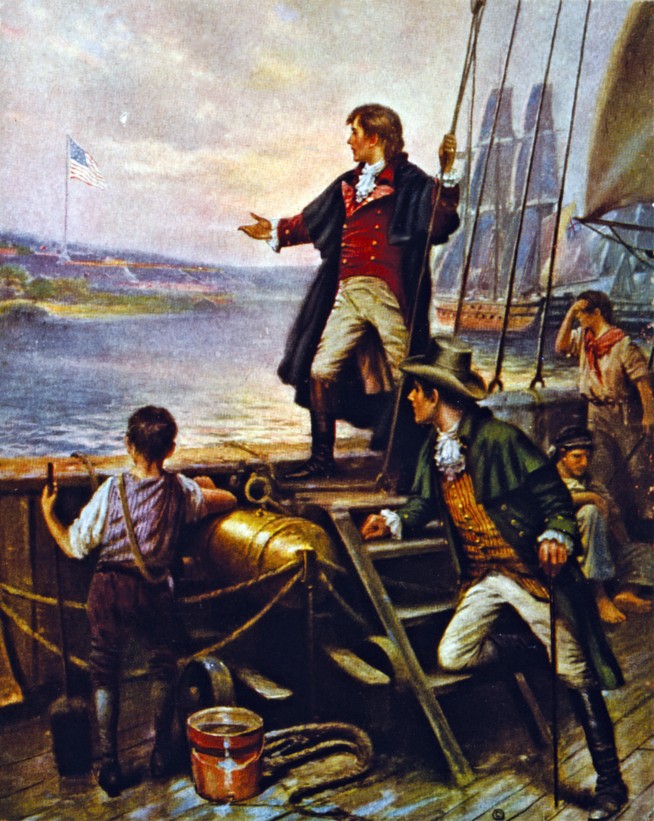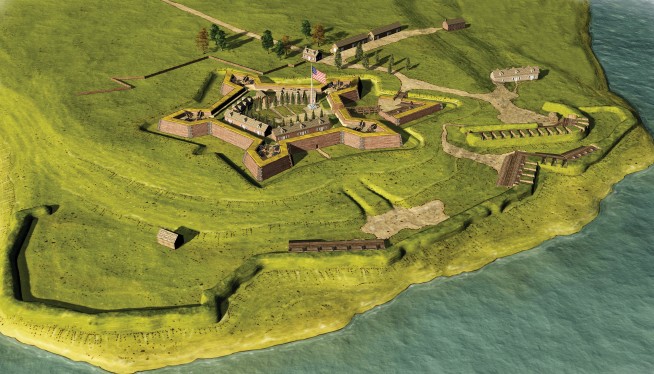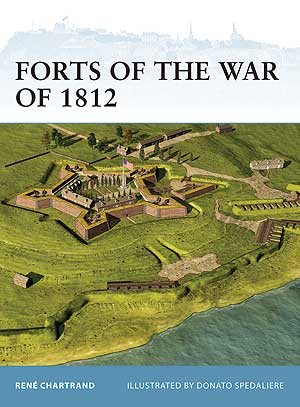By René Chartrand
On September 12, Baltimore was in view of the 50 British warships. To defend the city, some 14,000 militiamen joined 1,000 regulars. The most important fortification in the area was Fort McHenry, which guarded the access to the city’s port. It was a large First System earth-and-masonry fort built from 1799 to 1805 on the plans of French engineer Jean Fontin. It was a pentagon with five bastions, which gave it the shape of a five-pointed star, and was armed with some 30 guns, in addition to three water batteries. More features were added later on, notably a water battery in 1814 that had heavy French naval guns including some 36-pdrs. A boom consisting of ships’ masts fastened together was laid to block the 600yd-wide (549m) harbor entrance between the fort and Lazaretto Point.

Just past midnight on September 13, British bomb ketches and rocket ships started an intense bombardment of Fort McHenry that lasted 25 hours. Some 1,800 explosive bombs were fired at the fort, which some expected to be destroyed, but it stood up to the bombardment well. The great majority of the fort’s guns could not reach the British ships, which stayed safely outside their range of 1½ miles (2.4km). As a result, most of the British bombs and rockets fell short and missed the fort. The bombardment’s noise was deafening and could be heard by the worried population as far as 48 miles (77km) away.
Meanwhile, a British landing had been repulsed by American militiamen at North Point, and another west of Fort McHenry had been foiled by its guns and those of the Fort Covington battery. It became obvious to the British that Baltimore’s defenses were much stronger than expected. The bombardment ceased at 1.00 am on September 14, and later in the morning the British fleet sailed away. The Americans were elated; their coastal defense had stood up against a major attack and the confident fort commander, Corps of Artillery Major George Armistead, wanted an even larger flag for his fort in order to defy the British.

Excerpted from Forts of the War of 1812 by René Chartrand.
Reprinted with permission from Osprey Publishing.
RENÈ CHARTRAND was born in Montreal and educated in Canada, the United States and the Bahamas. A senior curator with Canada’s National Historic Sites for nearly three decades, he is now a freelance writer and historical consultant. He has written numerous articles and books including Forts of the War of 1812.

